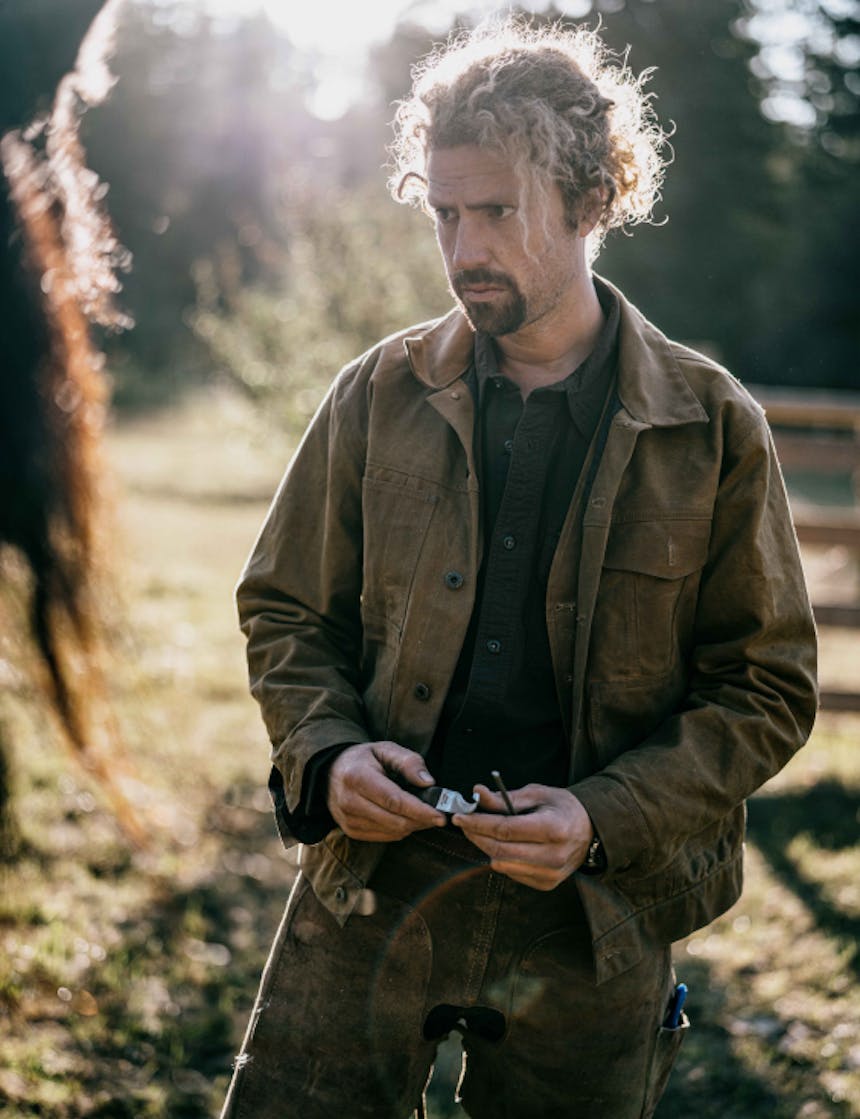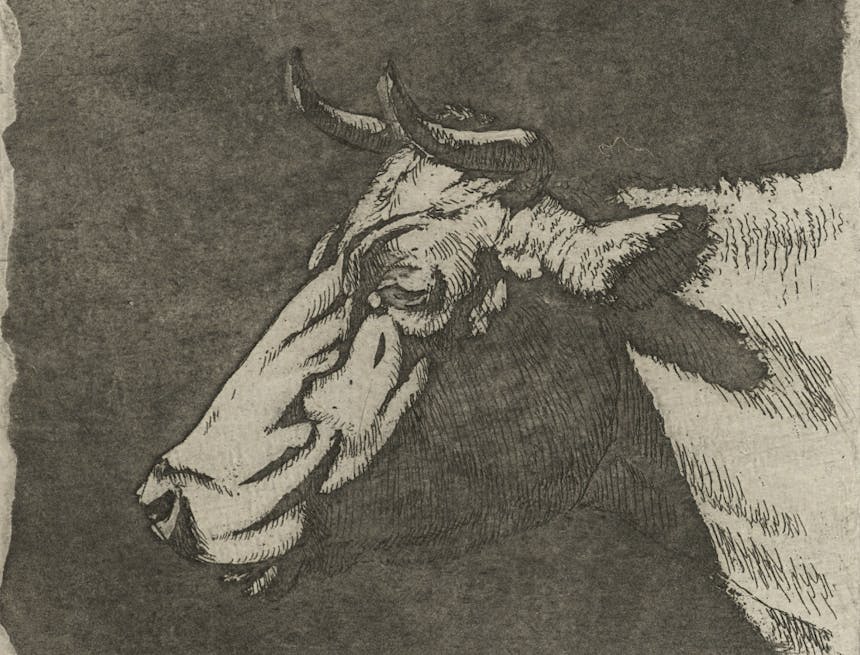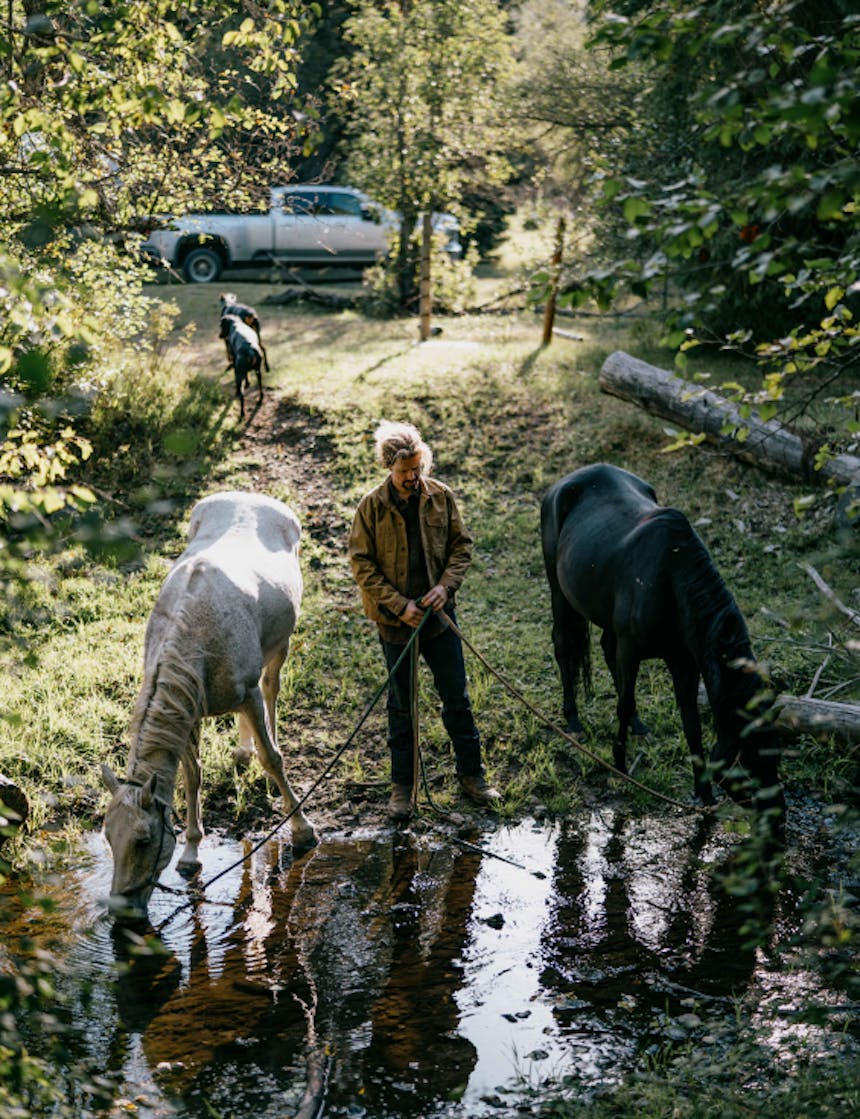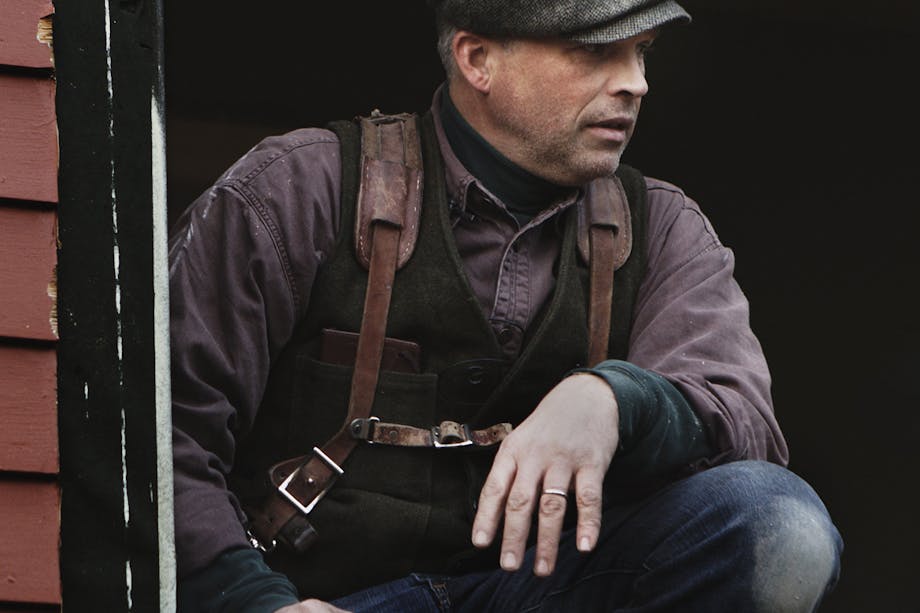As a range rider, Daniel Curry patrols the rugged wilderness of Colville National Forest in eastern Washington through all seasons and weather. He will spend weeks working tirelessly during both the daylight and nighttime hours with his three Doberman Pincers (Rook, Bishop, and Knight) and sometimes another rider for company. It’s not a job that pays well, and it is damn tough, but he doesn’t care. He is passionate about his work, which involves creating a buffer between the gray wolf and the many cattle herds that roam throughout the region on public lands, diminishing the chances of the destruction of a wolf for killing cows. Many ranchers are determined to figure out a way to coexist with the wolves—apex predators that only recently staged a comeback in a state they once called home before being wiped out decades ago. The work of Curry and his fellow range riders plays a large part in this effort.
“We know that wolves belong on this landscape. They’re a native species,” says Chase Gunnell, communications director for Conservation Northwest. “They have a place on these wildlands, but we don’t want to put important local businesses out of business. We want to have healthy local communities too. And when those communities are healthy and prosperous, there’s a lot more appreciation for wildlife and a lot more willingness to coexist with wolves.”
In 2011, Conservation Northwest helped to pioneer having active riders in the field when they launched their Range Rider Pilot Project. Modeled after efforts in Montana and Alberta, this collaboration with local ranchers on grazing allotments that overlap with wolf pack territories was designed to introduce an idea that had been shown to create a sustainable solution to the age-old problem of livestock and predator interactions. At present, the organization spends approximately $200,000 a year to keep Curry and two other riders in the field daily from June through October, directed by a full-time Wolf Program Lead based in northeast Washington, as well as providing “rapid response” range riding services should conflicts arise.
After more than a decade in operation, this expensive gamble is paying off as the presence of active riders in the brush has caught on and spread. Range riding, along with other year-round herd supervision techniques, training and equipment cost-sharing, has become part of a more extensive network across Washington that has grown to include seasonal riders contracted by the state and other organizations, private riders working for ranches, and eighteen additional range riders with the Northeast Washington Wolf Cattle Collaborative, a local outfit that Conservation Northwest staff helped facilitate.
"It was a lose-lose-lose situation. Ranchers were losing cattle, the state was losing money hunting wolves, and wolves were being killed...I knew there had to be a better way."
A huge man with a ready smile, Curry loved animals from his youth. He spent his twenties working with Wolf Haven International, rising through the ranks to become their Lead Animal Care Specialist. In 2012, after seeing tensions rise between ranchers and environmentalists in his home state of Washington, he decided to leave his job and head to the eastern part of the state to attempt to see if he could help find a solution. “It was a lose-lose-lose situation. Ranchers were losing cattle, the state was losing money hunting wolves, and wolves were being killed,” he says. “I knew there had to be a better way.”
Settling near Colville, not far from the Canadian border, he embarked upon his project. After almost a decade of working with wolves, he had intimate knowledge of their behavior, but no one wanted to hire him. Local ranchers, many of whom had owned their land for several generations, were skeptical of outsiders. So he threw himself into the community, doing any odd job possible and starting to meet his neighbors. He launched a business that was focused on human-wildlife conflict mitigation and worked at educating anyone who would listen. His persistence paid off, and he soon landed a job as the state of Washington’s first contracted range rider, a program that had just started to take root in the American West after some successes in Canada.


The hills and valleys of eastern Washington are the perfect place to cut a herd of cattle loose for several months and allow them to work their way across the landscape, eating as they please. Unfortunately, the land is also the ideal turf for a wolf pack to establish its territory. Since the cattle are on their own, with no humans minding them, they can become easy prey for the pack. That’s where Curry and other range riders come in.
“Once wolves have learned how to hunt cattle successfully, it can be a hard habit to break,” says Curry. “They are easier to hunt than deer or elk, animals that are naturally adapted to the forest. My job is to stop the wolves before they settle into hunting cattle and cause issues for ranchers—and themselves, ultimately.”
“Basically, I am trying to link into the wolves' mind that every time they see these cattle, a big dude with funky hair shows up scares me off.”
By embedding himself into the landscape for several weeks at a time, sometimes up to a month, Curry can dive deep into the remote locations where the animals will be in proximity to each other. Tracking the wolves, he can determine their patterns and know where they are heading. If it is toward the herd, he first places himself in their way—on his horse, on an ATV, or in his truck. The presence of a human is often enough, as wolves don’t like new things and will often will run away when confronted. If his presence isn’t enough, Curry will charge them, fire off pyrotechnics (when applicable), and use rubber bullets as a last resort.
“Basically, I am trying to link into the wolves’ mind that every time I see these cattle, a big dude with funky hair shows up scares me off,” he says. “So then they become accustomed to avoiding the herd and looking elsewhere for food. I change their behavior to protect them.”

He also works with the cows. Herding them into tighter groups allows them to form a defensive screen and discourages stragglers, which the wolves look for when hunting. He watches for overgrazing and keeps the cattle out of any riparian zones he or his dogs have identified.
Since the wolves are most active in the dawn and dusk hours, Curry often has to catch short blocks of sleep before he is on patrol again. “Daniel moves onto the range and lives there,” says Steve Fountain, a cattle rancher. “He works at night when the wolves are active and keeps the wolves wary of human presence instead of acclimating them to the smells of humans during the day and their absence at night. He can tell you more about how he does it because I don’t know, I just know it works.”
While the issue of wolves brings many passions to the surface, the species seems to be succeeding in the state. Their numbers were up 22 percent in 2020 to 178 in 29 packs, and that growth has all happened since they first reappeared in the state in 2008–2009. But there are issues with the range rider program too. There have been complaints that many of the riders do not dive deep enough into efforts to alter the wolves’ behaviors; instead, they act as screens, the way cowboys have always acted. While that may work well enough during daylight hours, it doesn’t do much to stop the majority of the problematic interactions, which tend to happen at night.
“I think that what Daniel is doing is great, and he clearly really cares. I think that he’s had a lot of success where he has been, but he’s just one person. So it’s not enough,” says Jocelyn Leroux, the Washington and Montana Director for the Western Watersheds Project. “As far as what the protocol for what range riding is, they (the state of Washington) specify near daily presence, which, reviewing some range rider records, usually looks like somebody going out and driving around for a few hours during the day, which is not when wolves are most active.


"It means so much to me that we have been able to figure out something that works, but we still have a long way to go ... Both sides on this issue have valid points, and it's only by working together that we have helped this beautiful animal and helped people still make a living."
If there were a hundred Daniels out there, I think it would be an incredible program, and I think that we would see a lot of changes.”
Curry is happy that he has made a difference in bridging the often-calamitous divide between the ranching and environmental communities. His job is part mitigation, part adaptation, and part wolf ambassador. When he moved east almost a decade ago, his goal was to help. “It means so much to me that we have been able to figure out something that works, but we still have a long way to go,” he says. “Both sides on this issue have valid points, and it’s only by working together that we have helped this beautiful animal and helped people still make a living.”





